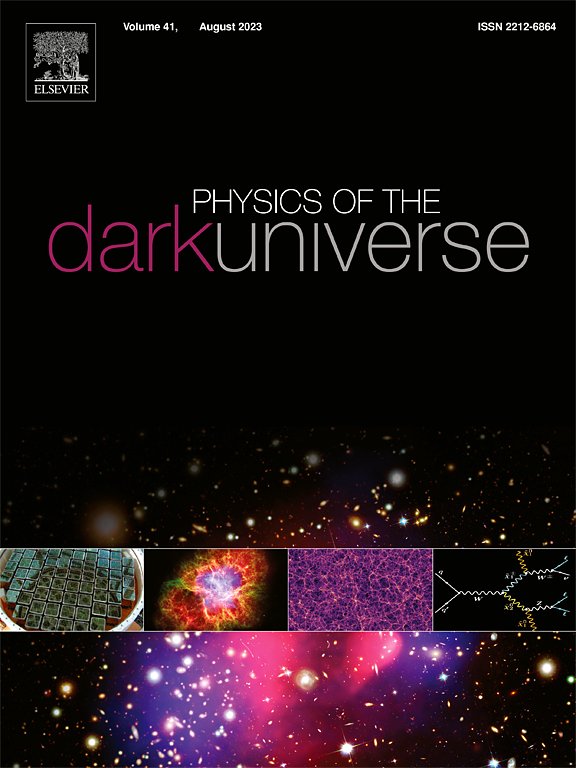Analysing geodesic motion in Bocharova–Bronnikov–Melnikov–Bekenstein spacetime
IF 5
2区 物理与天体物理
Q1 ASTRONOMY & ASTROPHYSICS
引用次数: 0
Abstract
In this paper, we explored novel feature of the Bocharova–Bronnikov–Melnikov–Bekenstein (BBMB) black hole by analyzing geodesic motion. We first examined its thermodynamics and showed that Hawking temperature equals to zero. We investigated motion of both massive and massless particles around the BBMB black hole and studied the characteristic radii, namely, marginally stable circular orbit (MSCO) and marginally bound orbit (MBO) for massive particles orbiting the BBMB black hole. Additionally, we found that the energy efficiency of massive particles in the BBMB spacetime can reach up to 8%. We also studied the capture cross section of massless (photon) and massive particles by the BBMB black hole. From the equations of motion, we derived the radial function crucial for determining the critical value of the impact parameter for photons and particles. Comparing these findings with the Schwarzschild spacetime, we observed significant differences in gravitational properties. Specifically, the impact parameter for a photon is smaller in the Schwarzschild field than in the BBMB field, indicating weaker gravity around the BBMB black hole, as corroborated by the closer location of the photon sphere in the BBMB spacetime. We derived explicit expressions for the pericentric precession and the deflection angle of light by the BBMB black hole, along with the trajectory of massive particles orbiting the black hole. We showed that test particles on elliptical trajectories experience pericenter shifts, with pericentric precession in the BBMB spacetime being slightly less than that predicted by Einstein’s general theory of relativity. Lastly, we studied the deflection of light rays and gravitational lensing effects by the BBMB black hole in both strong and weak field approximations, incorporating general relativistic effects from the Schwarzschild spacetime. We derived expressions for the deflection angle in first and second order approximations, and used the gravitational lensing equation to determine the magnification of primary and secondary images.
求助全文
约1分钟内获得全文
求助全文
来源期刊

Physics of the Dark Universe
ASTRONOMY & ASTROPHYSICS-
CiteScore
9.60
自引率
7.30%
发文量
118
审稿时长
61 days
期刊介绍:
Physics of the Dark Universe is an innovative online-only journal that offers rapid publication of peer-reviewed, original research articles considered of high scientific impact.
The journal is focused on the understanding of Dark Matter, Dark Energy, Early Universe, gravitational waves and neutrinos, covering all theoretical, experimental and phenomenological aspects.
 求助内容:
求助内容: 应助结果提醒方式:
应助结果提醒方式:


